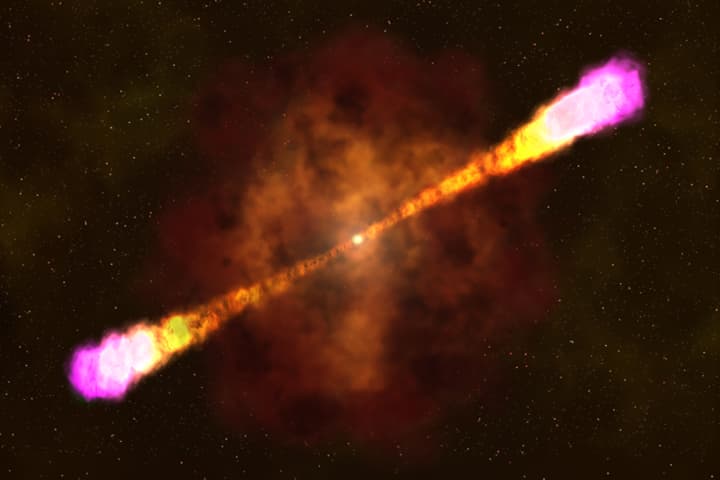Advertisement
The Universal Attraction Of Black Holes
ResumeA super-massive black hole, newly discovered, deep in space. We’ll peer into the realm of the black hole.

Big discovery last week. Very big, in the black hole business. Astronomers have detected an extremely massive black hole. Wildly huge. With a mass equivalent to 12 billion of our suns. All the big galaxies, our own, the Milky Way included, have black holes at their core. Ours is only 4 million times the mass of the sun, versus 12 billion in this new discovery. And this giant black hole dates back to the very early era of the universe. And this: this black hole is super-luminous. 40,000 times as bright as our galaxy. This hour On Point: Black hole mania. And we will remember Leonard Nimoy, Mr. Spock.
-- Tom Ashbrook
Guests
Tariq Malik, managing editor of Space.com. (@tariqjmalik)
Fiona Harrison, professor of physics and astronomy at the California Institute of Technology. Principal investigator at the NuSTAR telescope.
Priyamvada Natarajan, professor of astronomy and physics at Yale University.
From Tom’s Reading List
Nature: Cosmology: A giant in the young Universe — "It is commonly believed that every massive galaxy in the Universe harbours a supermassive black hole at its centre. These black holes are thought to have formed in the young Universe with initial masses of between 100 and 100,000 times the mass of the Sun. Over time, some of them have grown to be up to billions of solar masses by pulling (accreting) interstellar material from their surroundings and/or through merging with other black holes."
National Geographic: Gigantic Black Hole Discovered From the Dawn of Time — "Astronomers have identified a mammoth black hole weighing as much as 12 billion suns. It's not the biggest black hole ever found, but it's astonishingly young. The giant appears to have swelled to its enormous size only 875 million years after the big bang, when the universe was just 6 percent of its current age. That's a surprise, astronomers report Wednesday in the journal Nature, because giant black holes are thought to grow relatively slowly by vacuuming up gas and even stars that venture too close."
WIRED: What Black Hole Winds Can Reveal About Galaxies — "Black holes suck. Their gravitational pull is so powerful that black holes famously grab anything near them in space—even light. But black holes also, it turns out, blow. If they’re gobbling up any nearby matter, black holes actually stream charged subatomic particles. And that, astronomers now say, has huge consequences for the life of nearby stars and the shape of whole galaxies."
Live Long And Prosper, Spock: Leonard Nimoy Dies At 83
Charlie Jane Anders, author and blogger. Co-editor of i09. (@charliejane)
i09: Leonard Nimoy Showed Us What It Truly Means To Be Human -- "Leonard Nimoy didn't just have a massive impact on science fiction, he also transformed pop culture. Nimoy, who died today, took the thankless supporting role of an emotionless alien science whiz, and turned Spock on Star Trek into an icon."
This program aired on March 2, 2015.